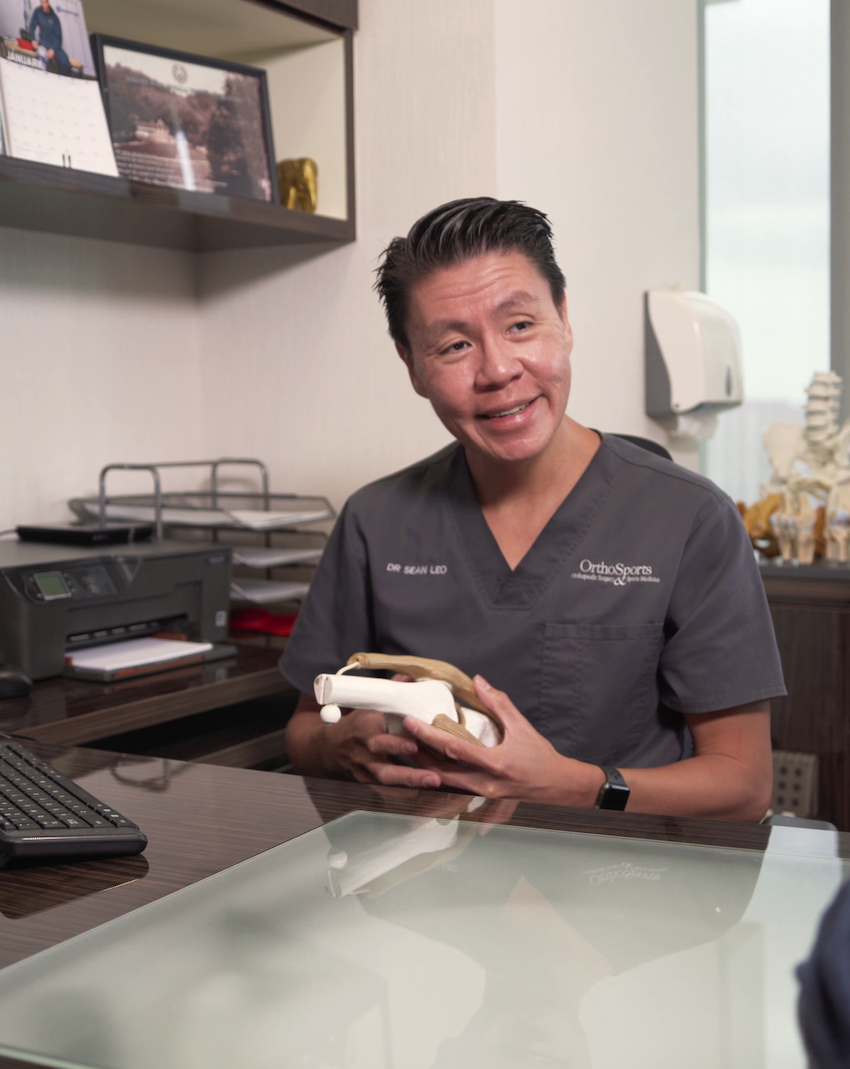ALL YOU NEED TO KNOW ABOUT
Patella Dislocation:
Comprehensive Guide to
Understanding, Treatment, and Recovery
Patella Dislocation: Comprehensive Guide to Understanding, Treatment, and Recovery
What is Patella Dislocation?
The patella, or kneecap, is a small bone that sits in front of the knee joint and plays an essential role in knee extension. A patella dislocation occurs when the kneecap slips out of its normal position, usually to the outside of the knee.
This condition is often caused by trauma or sudden changes in direction and is particularly common in young athletes. Understanding how patella dislocation occurs, its symptoms, and the best treatment approaches is critical for long-term knee stability and function.
Causes of Patella Dislocation
Common causes include:
- Direct Trauma: A blow to the knee, especially from the side, can push the patella out of alignment.
- Twisting Motions: Sudden turns or pivots, especially with a planted foot, may lead to dislocation.
- Anatomical Factors: Individuals with shallow trochlear grooves, high-riding patella (patella alta), or ligament laxity are more prone.

Symptoms of Patella Dislocation
Signs and symptoms may include:
- Visible Displacement: The kneecap appears out of place, often laterally.
- Intense Pain: Especially during movement or when trying to straighten the knee.
- Swelling: Often develops quickly after the injury.
- Inability to Bear Weight: Difficulty standing or walking on the affected leg.
- Knee Instability or Buckling: Sensation that the knee may give way.
Diagnosis of Patella Dislocation
Medical assessment may involve:
- Physical Examination: To assess kneecap alignment, ligament stability, and swelling.
- X-ray: To confirm dislocation and check for fractures.
- MRI: To assess damage to ligaments, cartilage, or other soft tissues.
Treatment Options for Patella Dislocation
Treatment varies depending on whether it is a first-time dislocation or recurrent.
Non-Surgical Treatments
- Reduction: Manual realignment of the kneecap by a healthcare provider.
- Immobilisation: A brace or splint may be used to keep the knee stable.
- Ice and Elevation: To reduce swelling and pain.
- Physiotherapy: Focused on strengthening the quadriceps and stabilising the knee.
Surgical Treatments
Surgery may be necessary in cases of:
- Recurrent Dislocations
- Severe Soft Tissue Injury (e.g., torn medial patellofemoral ligament – MPFL)
- Loose Bone Fragments or Associated Fractures
Surgical options may include medial patellofemoral ligament (MPFL) reconstruction, trochleoplasty, or tibial tubercle transfer.

Recovery and Rehabilitation
Recovery after a patella dislocation is a gradual process aimed at restoring knee stability and preventing recurrence. Most patients will undergo a structured rehabilitation programme that includes:
- Phase 1 – Acute Recovery: Focus on reducing swelling and regaining gentle range of motion.
- Phase 2 – Strengthening: Emphasis on quadriceps, hamstring, and hip muscle activation to stabilise the kneecap.
- Phase 3 – Functional Training: Balance, proprioception, and agility work to prepare for return to daily activities and sports.
- Phase 4 – Return to Activity: A gradual return to sport-specific movements under medical supervision.
Prevention of Patella Dislocation
Preventive strategies include:
- Strengthening Exercises: Especially for the quadriceps and hip abductors
- Neuromuscular Training: Improves control and reduces knee injury risk
- Proper Technique in Sports and Workouts
- Bracing: In some cases, a patella stabiliser brace may help prevent recurrence

When to See a Doctor
Frequently Asked Questions
How much does a consultation cost?
Our consultation fees are structured to reflect the time and expertise required to provide thorough and personalised care
for each individual case.
- Initial Consultation: Fees range from $150 to $200, depending on the duration and the complexity of the case.
- Follow-Up Consultations: Fees range from $80 to $120, depending on the duration and the complexity of the case.
Can I use Medisave for treatment with Dr Sean Leo?
Yes, Medisave can be used for eligible treatments with Dr Sean Leo, such as approved surgeries and procedures performed
by accredited specialists.
How to confirm eligibility:
- Consultation: Dr Sean Leo will inform you if your treatment is Medisave-claimable.
- Verification: Our staff will verify your procedure's eligibility.
- Claim Assistance: We’ll assist with the necessary documentation and submission process.
For more information, feel free to contact our clinic for assistance.
How can I claim insurance for my treatment?
For other insurance policies, we can help by liaising with your insurance agent to provide the necessary documents for your claim. Speak to our friendly staffs for the procedure and list of eligible insurance.
Are MRI scans, X-rays and Ultrasounds available to be done with Dr Sean Leo?
Yes, we offer MRI scans, X-rays, and ultrasound services at our clinic. We will assist in arranging these diagnostic tests for
you if needed. X-rays can typically be completed and ready on the same day, depending on availability at the radiology
department. We also have ultrasound machines in both clinics for diagnostics and therapeutic procedures.
For more details or to schedule an appointment, please contact our clinic for.
Are there non-surgical treatment options available?
Yes, non-surgical treatment options are available and can vary depending on the condition. These may include physical therapy, medication, injections, or other minimally invasive procedures. The most suitable treatment will depend on the severity of your condition and your individual needs. Dr Sean Leo will assess your condition and discuss your requirements to recommend a personalised treatment plan.
Book an Appointment
Leave us a few details and Dr Sean’s team will get back to you shortly.

